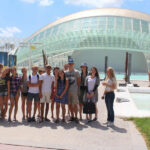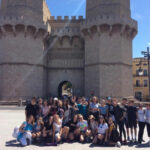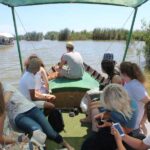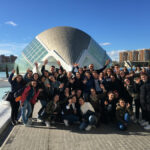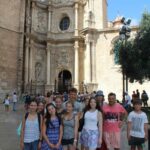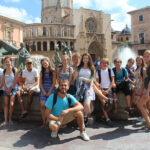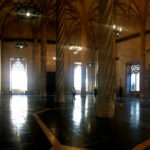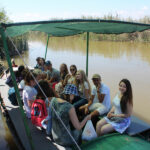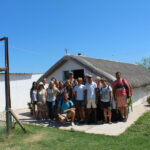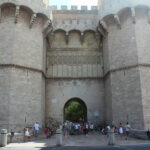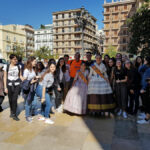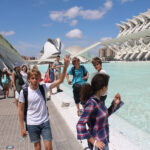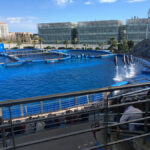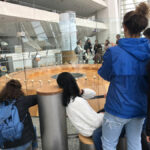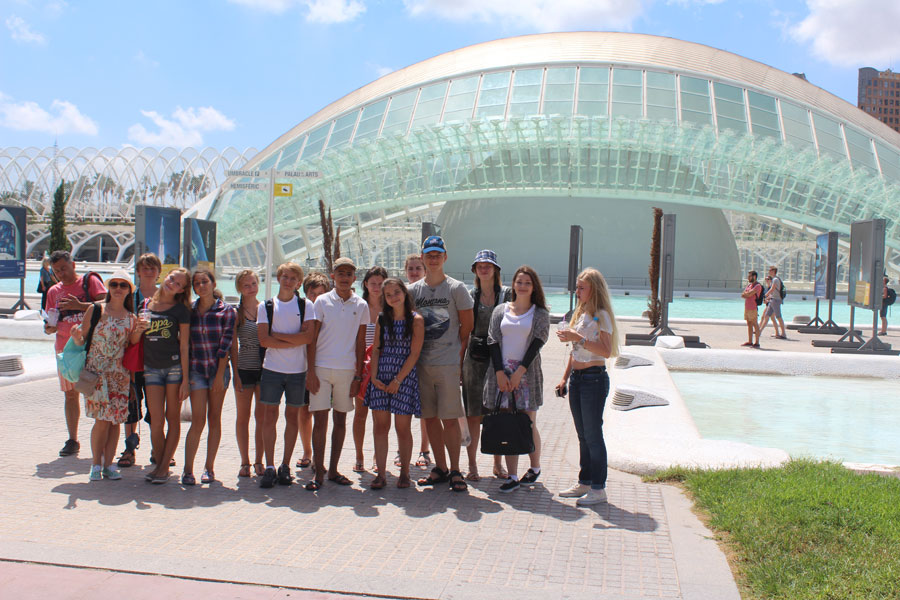
Denia is situated about 100km from Valencia, the third most populated city in Spain after Madrid and Barcelona.
It is located on the Mediterranean coast and is known for its history, architecture and gastronomy.
On our excursion to Valencia for school groups, students will discover the most renowned places in the city and learn about the history and culture of the city, while practicing their Spanish skills.
They will explore the old town, home to the Valencia Cathedral and the famous Lonja de la Seda. They will walk through the historic streets and discover the medieval history of the city with our monitors and a local tour guide while also using their Spanish.
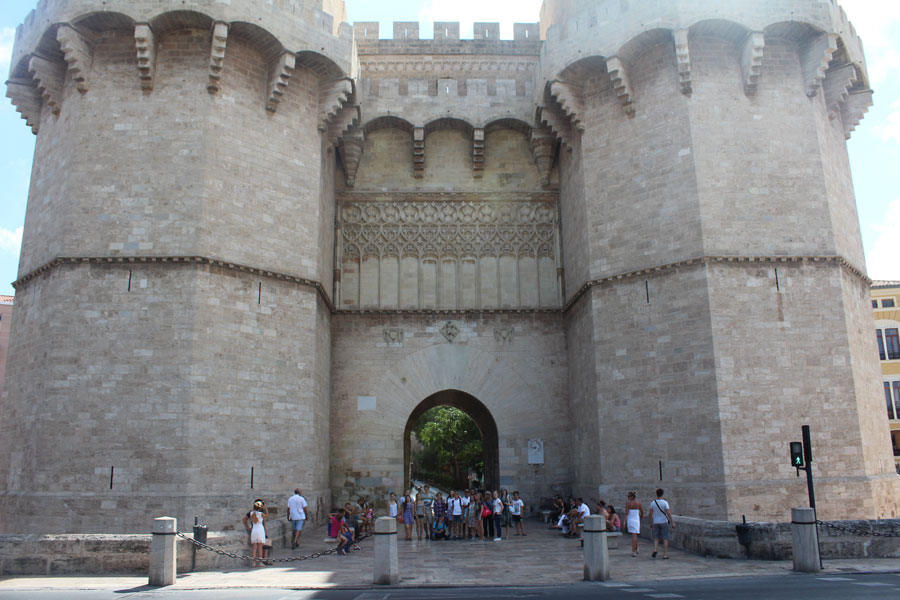
The City of Arts and Sciences is an architectural and cultural complex located in Valencia and is one of the most popular tourist destinations in the country and a benchmark in the field of modern architecture and scientific dissemination.
It was designed by the Spanish architect Santiago Calatrava and the Valencian architect Félix Candela,and was partially inaugurated in 1998. Since then, it has been internationally recognised for its avant-garde design and its contribution to the promotion of science, culture and the arts.
– It houses l’Oceanogràfic, the largest aquarium in Europe with a wide variety of marine species from all over the world. It is divided into different thematic areas, such as the Mediterranean, the tropical oceans, the Arctic and the Antarctic. It also has a dolphinarium and dolphin shows.
– The Hemispheric is an impressive IMAX cinema and planetarium in the shape of a human eye. It offers 3D and IMAX screenings on themes related to nature and the universe.
– The Príncipe Felipe Science Museum is an interactive science and technology museum. Its architectural design is innovative and resembles the structure of a dinosaur skeleton. It offers interactive exhibits on subjects such as technology, biology, physics and astronomy.
– The Palacio de las Artes Reina Sofía is the auditorium and opera house of the City of Arts and Sciences. It has four halls of different sizes and is dedicated to the promotion of the performing arts, such as music, opera, dance and theatre.
– The Ágora is a multi-purpose covered space used for cultural events and activities. It is shaped like a giant eye and is used for exhibitions, concerts and other events.
In addition to these buildings, the City of Arts and Sciences also has large garden areas, rest areas, restaurants and shops.
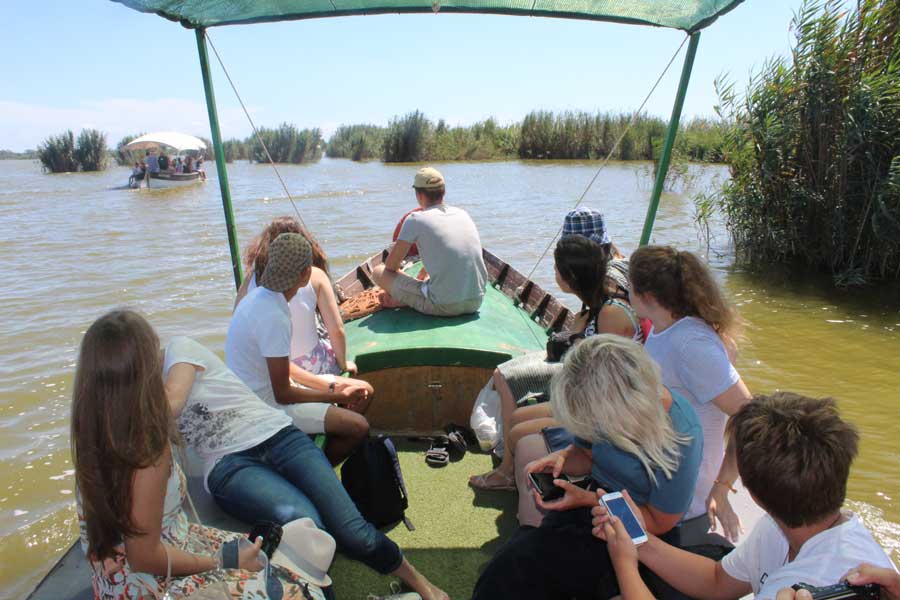
Valencia is home to another tourist attraction: the Albufera, a large freshwater lake that extends over approximately 21,000 hectares. It is considered one of the most important coastal lagoons in Europe and has been declared a Natural Park due to its rich biodiversity and its importance as a habitat for numerous species of birds, fish and plants.
One of the main attractions of the Albufera is its natural environment with extensive areas of rice fields, dense pine forests, sand dunes and unspoilt beaches.
To discover the Albufera in all its magnitude, a popular option is to take a boat trip on its waters. Students take great photos from the boat. A local boatman guides us through the canals, showing us the fauna and flora that inhabit the lagoon.
Another highlight of the Albufera is its gastronomy. The region is famous for its traditional dish, ‘Paella Valenciana’, the authentic paella, which is the best known dish in Spanish gastronomy.
The excursion to Valencia is a perfect activity for school groups who wish to learn Spanish and discover Spanish culture. Students will return home with unforgettable memories of their experience visiting this city.

